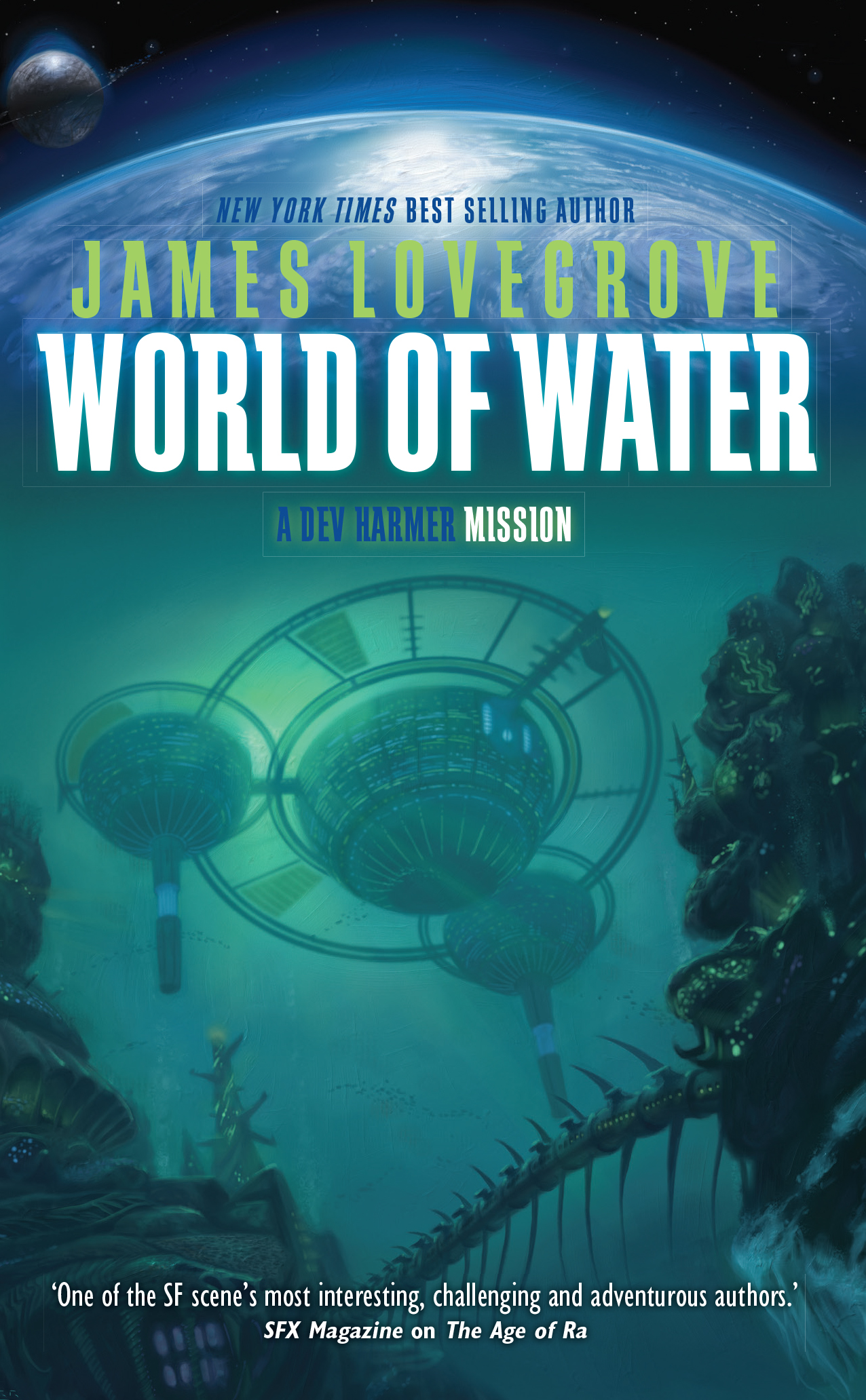
World of Water should not be confused with Waterworld, the 1995 Kevin Costner movie which it seems nobody saw and liked apart from me.
Yes, I know it’s a crap film. I knew that even before I went to the cinema to watch it. But it has some amazing set design, some memorable imagery, and a grand sense of ambition. In the mid-90s Costner was a big box office draw, and he could have chosen to play things safe. Instead, he used his star power to leverage funding for an expensive post-apocalyptic action adventure and cast himself as a somewhat unlikeable protagonist. Kudos to him for that.
My novel, despite a certain similarity of title, bears no resemblance otherwise. The second in my Dev Harmer series, it’s set on an alien world entirely made of water rather than, as in the Costner movie, our own future Earth after the icecaps have melted. Can such worlds exist?
Apparently, yes. The idea of ocean planets has been hypothesised by astronomers and cosmologists. Originally formed of ice, they melt as they migrate inward to the centre of their solar systems. Their seas are thousands of kilometres deep, with either ice at their core or else some strange alternative phase of water generated by the immense pressures. The extrasolar planet Gliese 1214 b, which orbits a star in the constellation Ophiuchus, is considered the most likely known candidate for being one.
Our own oceans on Earth are filled with life. Some of it is amazing, some creepy, and some downright terrifying. In World of Water I set myself the task of realising what kinds of aquatic life there would be on an alien ocean planet. At times I based my speculation on real examples – the hideous vampire squid, for one, and the equally unlovely anglerfish – while for other specimens I just let my imagination run wild.
I also wanted to create a humanoid water-dwelling race, and part of the challenge, and the fun, was making them simultaneously credible, otherworldly and empathetic. I did not want them to resemble in any way the Aquaphibians, the fishy race in the puppet TV show Stingray. Instead I went for something sylph-like, eerie-looking, yet strong and aggressive.
When tackling the issue of how they might communicate underwater, I first considered a variant of whalesong or dolphin-style echolocation clicks, but in the end decided on bioluminescence. Many forms of sea life, including squid and some octopuses, have light-emitting photophore cells in their skins which serve as camouflage or enable them to lure prey, confuse predators and even see certain food sources in the deep-sea darkness. I envisioned my sea-dwellers using their photophores to express thoughts and emotions, employing colours and patterns in complex configurations. In effect, they speak in light.
The seas scare and fascinate me. The pleasure of swimming offshore on a hot day is mitigated by the primordial fear of what might lurk below the waves, unseen, wishing to take a bite out of me or drag me down and drown me. I hope I’ve managed to inject some of that awe and dread into World of Water.
World of Water is out now!
Buy: US|eBOOK
